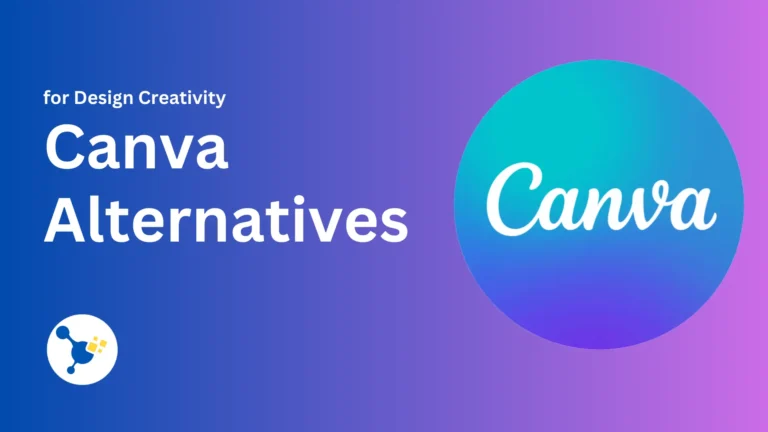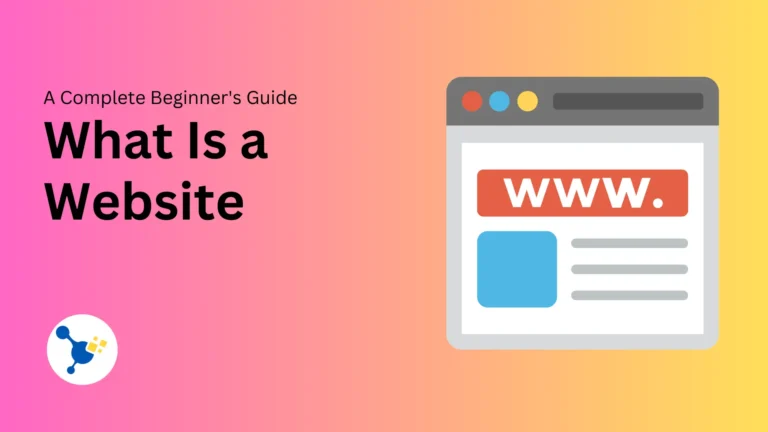How to Become a Successful Freelance Digital Marketer: The Ultimate Guide for Beginners

So you want to become a digital marketing freelancer? Great idea! With the rise of online businesses and digital marketing, there’s a huge demand for skilled freelancer digital marketers who can help companies grow.
But how exactly do you get started and build a successful freelance career? This complete guide covers everything you need to know, from the basics to advanced tips.
Whether you’re switching careers or just starting out, follow these steps to start working and earning as a freelance digital marketing expert.
What is a Freelance Digital Marketer?
A freelance digital marketer is an independent consultant who offers digital marketing services to clients, usually working remotely.
Some core responsibilities include:
- Optimizing websites for organic search (SEO)
- Running pay-per-click (PPC) ad campaigns
- Creating and sending email campaigns
- Managing social media accounts
- Creating marketing content like blog posts and videos
- Tracking campaign performance with analytics
- Building marketing funnels and optimizing conversions
In short, freelance digital marketers help businesses grow by leveraging various online channels and tactics.
Compared to a full-time in-house marketer, you get to enjoy more freedom by choosing your own clients and setting your own rates and hours.
Key Benefits of Becoming a Freelance Digital Marketer
Here are some major advantages to going the freelance route:
- Be Your Own Boss – You get to take charge of your schedule, workload, clients and rates without a boss micromanaging you. The flexibility is invaluable to many.
- Make More Money – Talented freelancers can earn over $100 per hour, with top performers making over $500k a year. The income potential outpaces in-house roles.
- Gain Valuable Experience – By serving multiple clients and projects, you rapidly build experience across different industries, tactics and challenges. This accelerates your learning curve.
- Build Expert Status – Continuous skills development and demonstrating results can establish you as a leading digital marketing expert in your niche. This boosts authority and inbound leads.
- Work From Anywhere – One of the best parts of freelancing is having geography freedom. You can work from home or even travel the world with just a laptop and internet connection.
- In short, going freelance accelerates your income, skills and freedom as a digital marketer.
Next, let’s go through exactly how to get started step-by-step.
Step 1: Build Relevant Digital Marketing Skills
To become successful as a freelance digital marketer, the very first step is to build expertise across key skills like:
- SEO
- Content creation
- Social media marketing
- Email marketing
- PPC advertising
- Web analytics
- Conversion rate optimization
Once you have a solid grasp of the fundamentals, choose 1-2 high-demand specializations to really double down on and become an expert.
For example, you could focus on just SEO + content or email + PPC. Avoid being a generalist early on.
Here are proven ways to build skills from scratch:
- Take Courses – Enroll in comprehensive digital marketing courses online or offline institutes that offers high quality course. These will quickly level up your knowledge with structured learning.
- Get Hands-On Practice – Nothing beats learning from actual experience. Create your own website, run experiments and manage real marketing campaigns for free or low cost.
- Work at a Marketing Agency – Even a short 3-6 month internship at an agency will massively accelerate your learning under the training of experts managing large campaigns.
- Obtain Digital Marketing Certifications – Getting certified by respected institutions like Google, HubSpot and SEMrush verifies your expertise to prospective clients.
- Master Top Marketing Tools – Get fluent with essential software like Google Analytics, SEMrush, OptinMonster and MailChimp by using them daily. Tools mastery vastly improves work efficiency.
With dedication, you can go from digital marketing beginner to intermediate/advanced within 6-12 months by mixing online learning with hands-on practice.
If you are interest in becoming a freelance digital marketer, PixelSprout Academy in Bangalore would an ideal place to get started towards your freelancing journey.
Step 2: Build Your Personal Brand
Establishing yourself as an authority in your niche is critical for getting clients and commanding high rates as a freelancer.
Here are 3 brand-building musts:
- Create a Professional Website – Have a polished online presence that inspires credibility. Make sure to highlight client logos, testimonials, case studies and your services.
- Start Blogging & Guest Posting – Content marketing through an educational blog and contributing posts to industry websites are powerful for organic reach and SEO.
- Be Active on LinkedIn – Network with other professionals, share advice and promote your brand on LinkedIn to grow connections and establish expertise.
Make no mistake – personal branding is an absolute necessity for succeeding in freelancing.
It’s how you get discovered by potential high-paying clients that browse online for marketing talent and subject matter experts.
Step 3: Specialize With a Niche Focus
Finding an in-demand niche and specializing is one of the smartest early moves you can make.
Rather than being a generalist, become known as an expert in high-value areas like:
- SEO for ecommerce stores
- Lead generation with emails & landing pages
- Facebook ads for coaches & consultants
Specialization does 3 things:
- Sets you apart from the freelancer crowd
- Attracts perfect-fit clients
- Allows raising rates
All of this leads to higher income potential and more enjoyable work.
When selecting your niche, examine your existing skills/experience, industries with abundant opportunities (e.g. ecommerce) and high-paying client types (e.g. law firms).
Step 4: Learn Sales, Marketing & Client Management
Beyond digital marketing hard skills, running a business necessitates sales, positioning, client expectations management and more business development capabilities.
Crucial areas to get competent at include:
Sales Skills
- Crafting compelling proposals
- Negotiating rates
- Overcoming objections
- Closing deals
Client Management
- Onboarding & expectations alignment
- Ongoing communication/email etiquette
- Delivering reporting & insights
Marketing Skills
- Personal branding
- Lead generation
- Advertising services
Build these skills through courses, books and mimicking successful freelancers. Unlike technical specialties, business skills usually require modeling an expert.
Getting proficient here determines long-term freelancing success.
Step 5: Clarify Your Offerings & Rates
With skills and niche clarified, the next step is defining:
A) The services you will offer B) How much you will charge clients for them
Service offerings may span:
- One-time projects like website audits
- Ongoing retainers like monthly SEO work
When deciding rates, first research what top performers charge within your niche. Rates will vary greatly based on geography, client size and niche – from $50 per hour up to $500+ per hour typically.
As a newer freelancer, you can price on the lower end or offer discounted packages to secure your first clients. Focus on delivering extreme value upfront rather than maximizing dollars.
Over-delivering and getting impressive client results is what allows commanding higher rates long-term.
Step 6: Get Your First Clients
Once the fundamentals are covered, at some point you have to make the leap to securing those initial clients.
Here are proven tactics to land your first deals:
- Tap Your Existing Network – Reach out to old colleagues, friends and family who have businesses to offer discounted services. Warm leads convert more easily to start.
- Run Targeted Ads – Experiment with precise LinkedIn and Facebook ads targeting your ideal client profile. Pay only for confirmed leads/calls.
- Pitch Guest Posts – Land contributor posts on authority sites read by your targets. Include a writer bio with a call to action.
- Offer Free Audits – Audit a website or campaign for free in exchange for a testimonial and referral introduction. This converts extremely well.
At this stage your #1 priority is to build portfolio pieces, case studies and reviews – even for zero/low pay to start.
Momentum fuels more clients and referrals. As your portfolio grows, shift to higher value long-term clients.
Step 7: Develop Rock Solid Processes & Tools
With initial clients and projects underway, it’s essential to implement standardized systems and tools for smooth delivery.
Key processes to systematize include:
- Proposal & contract templates
- Onboarding new clients
- Collecting payment
- Project management
- Client reporting
Likewise, identify go-to toolsets for executing work efficiently across areas like:
- Content creation (Grammarly)
- Email marketing (Mailchimp, ConvertKit)
- Analytics (Google Analytics, Google Data Studio)
- Ads (Google Ads, Facebook Business Manager)
Systemization allows taking on more clients without everything descending into chaos. It also reduces profit leakage through wasted time.
Audit what top freelancers in your field use both for processes and software tools – then apply those learnings.
Step 8: Specialize Even Further as You Grow
The more experienced you become, double down on specialization before expanding your service area.
For example, instead of offering general Facebook ad services, become known as the freelancer that specializes in:
“Lead generation for financial services with Facebook ads”
Going narrow allows you to:
- Raise your rates higher
- Work only with your ideal clients
- Become the #1 authority in a niche
All this boosts both enjoyment and income. Beyond more money, you’ll gain recognition as one of the top consultants in your micro-niche.
Additional Tips to Thrive Long-Term
If you’ve made it this far, congratulations! You’re well on your way to freelance success.
Here are a few more tips to help your business continue thriving:
- Constantly Learn New Marketing Tactics – Digital marketing evolves extremely fast. What works today may not tomorrow. Commit to ongoing education.
- Track Key Business Metrics – Monitor client lifetime value, churn rate, client acquisition costs and other numbers to maximize growth.
- Stay Organized – With multiple clients and projects, impeccable organizational skills are a requirement. Use tools like Asana and Trello.
- Automate Where Possible – Leverage tools like Zapier and Integromat to systemize repetitive tasks so you can focus on high-value work.
- Specialize Further Over Time – Keep niche specializing into micro-verticals. Competition gets easier and clients more premium.
- Maintain Work/Life Balance – Freelancing affords flexibility but can still lead to burnout. Keep healthy work hours and take regular time off.
- Consider Agencies vs. Solopreneurship – At some stage evaluate if starting a small agency with subcontractors suits your goals vs. remaining a solo freelancer.
Conclusion & Next Steps
Thanks for reading! I hope this guide provided an extensive overview of how to get started and find freelance success in digital marketing.
Here are your next steps:
- Take a free digital marketing training course to reinforce fundamentals
- Launch your website to start establishing personal brand & credibility
- Test running Facebook/LinkedIn ads to land first clients
Wishing you the all best as you start your marketing freelancing journey! The world needs more passionate digital marketing talent.
Let me know in the comments if you have any other questions.






